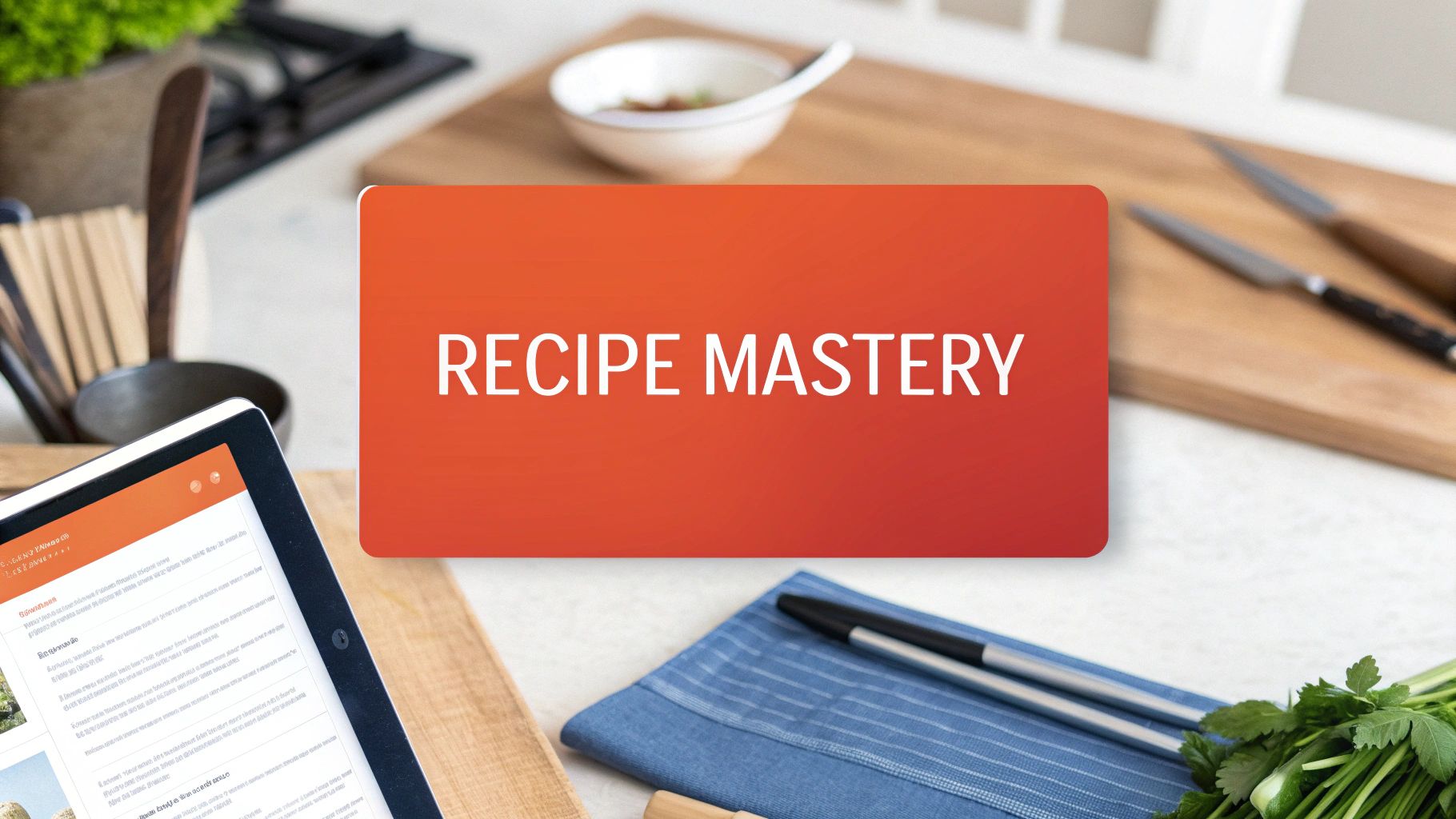Why a Recipe System Will Transform Your Cooking Life
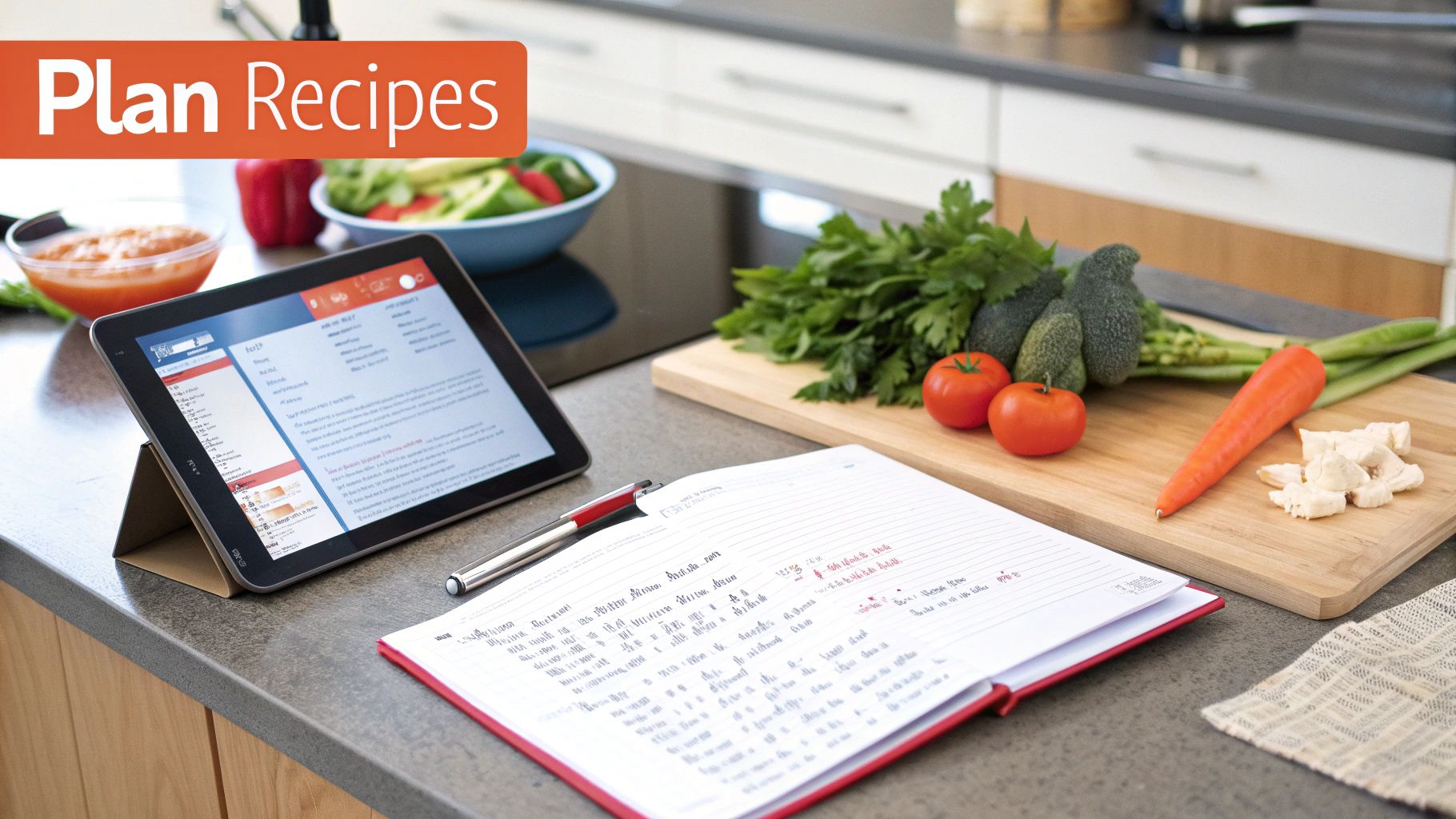
Do you feel overwhelmed by your recipe collection? Many people struggle with stacks of cookbooks, overflowing recipe boxes, and countless digital bookmarks. This can make cooking feel stressful rather than enjoyable. Learning how to organize recipes is key to a smoother cooking experience. A good system will save you time and transform how you feel about cooking.
Imagine easily planning weekly meals by browsing categorized recipes. No more frantic searches for a dish or last-minute grocery runs for forgotten ingredients. This is the power of an organized recipe collection.
Organized cooks also report less food waste. Knowing what ingredients you have and easily finding recipes that use them prevents produce from spoiling. This makes your kitchen more sustainable and cost-effective. It also empowers you to explore new cuisines and techniques.
The importance of recipe organization is reflected in the growth of the global Recipe Organizer market. By 2033, it's projected to reach $1.424 billion. This growth is fueled by demand for health-conscious meal planning and the integration of AI in recipe management. It shows a broader shift towards more intentional cooking. Find more detailed statistics here
Benefits of an Organized System
-
Reduced Meal Planning Stress: Quickly locate recipes that fit your schedule and dietary needs.
-
Minimized Food Waste: Use ingredients efficiently and cut down on extra trips to the grocery store.
-
Increased Culinary Confidence: Explore new recipes and techniques without hesitation.
-
More Enjoyable Cooking Experience: Focus on creating delicious meals, not searching for recipes.
By creating a personalized recipe organization system, you'll rediscover the joy of cooking. The next sections will offer strategies for both digital and physical organization, helping you find a system that suits your cooking style.
Digital Recipe Management That Actually Works
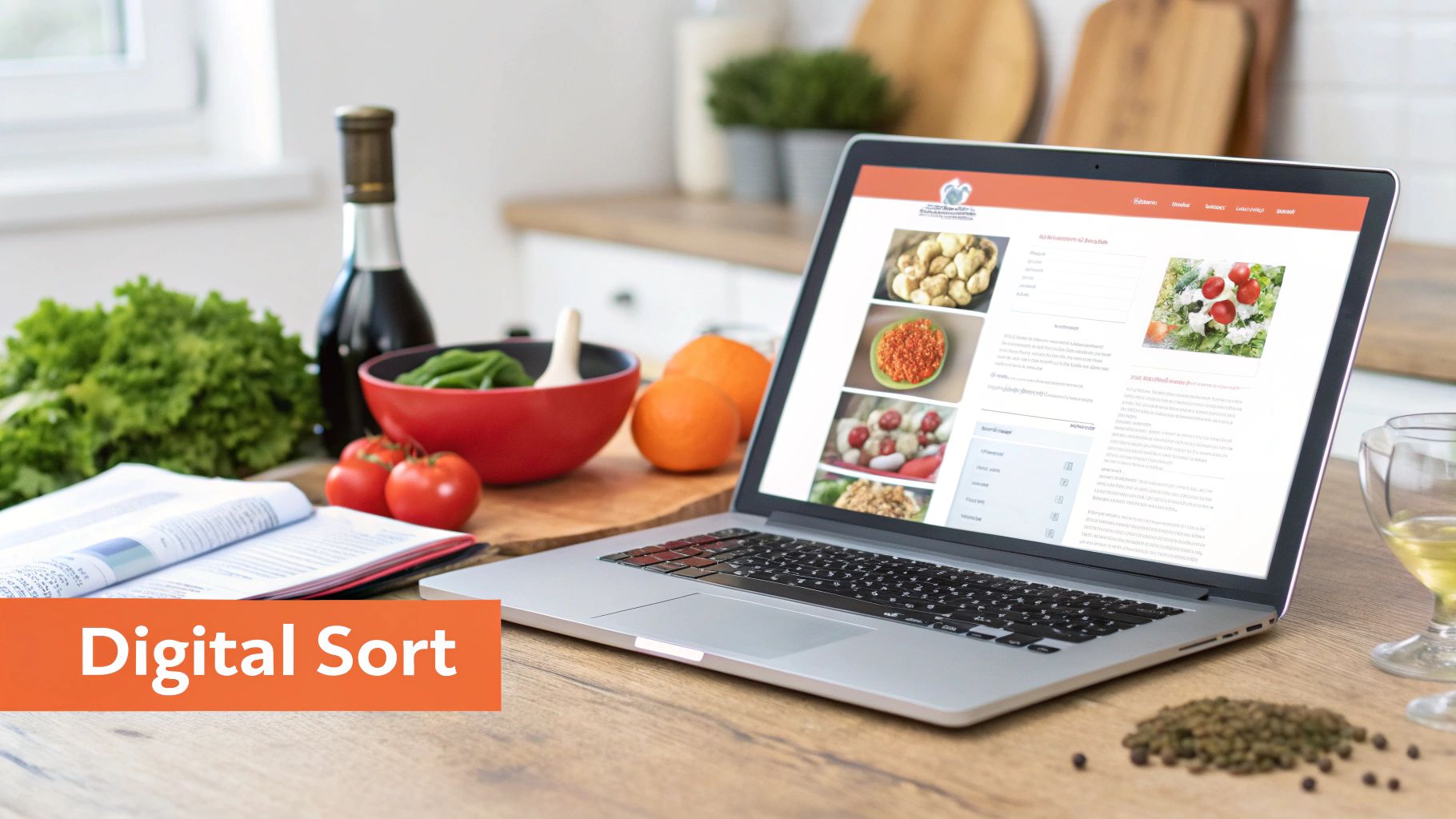
Tired of messy bookmarks and stacks of printed recipes? Digital tools offer a much better way to organize your culinary collection. From dedicated recipe apps to simple cloud storage, managing your recipes has never been easier. Finding the right recipe, whether at home or the grocery store, becomes a breeze.
This shift to digital recipe management makes sense. We're all busier, and more people are interested in healthy eating. The recipe app market is booming, projected to hit $2.32 billion by 2029 with a 13.2% annual growth rate. In the U.S., 81% of consumers cook over half their meals at home, highlighting the need for convenient recipe solutions.
Digitizing Your Treasured Recipes
The first step is getting your existing recipes into a digital format. This might involve photographing handwritten cards, scanning cookbook pages, or typing out family favorites. Creating searchable PDFs is another great option. This preserves treasured recipes while making them readily available.
The Power of Tagging and Categories
Once your recipes are digital, a good tagging system is key. Go beyond basic categories like "dinner" or "dessert." Tag recipes with specific ingredients, cooking methods, dietary restrictions, and even occasions. A recipe could be tagged with "chicken," "oven-baked," "gluten-free," and "weeknight meal." This lets you find the perfect recipe for any situation. For more tips on organizing your digital recipes, check out this helpful resource: How to master digital recipe organization.
Choosing the Right App for You
Many recipe apps go beyond basic storage. Look for features like syncing across devices, meal planning tools, and even grocery list generators. But not all apps are the same. Some specialize in certain cuisines or diets, while others focus on social sharing. The best app depends on your cooking style and what you need. You might find this article helpful: How to master digital recipe organization.
To help you choose, we've compiled a comparison of popular recipe organization apps:
Top Recipe Organization Apps Comparison
A comprehensive comparison of leading recipe organization applications, including key features, pricing, and user interface ratings
| App Name | Key Features | Device Compatibility | Price | User Rating |
|---|---|---|---|---|
| Paprika | Recipe clipping, meal planning, grocery lists, pantry tracking | iOS, Android, macOS, Windows | $4.99 (one-time purchase) | 4.8 stars |
| Plan to Eat | Meal planning, grocery lists, recipe import, drag-and-drop interface | iOS, Android, Web | $4.95/month or $39/year | 4.5 stars |
| Mealime | Personalized meal plans, dietary restrictions, grocery lists, cooking instructions | iOS, Android | Free (with in-app purchases) | 4.6 stars |
| Whisk | Recipe saving, meal planning, grocery lists, social sharing | iOS, Android, Web | Free | 4.4 stars |
| BigOven | Massive recipe database, recipe scanning, meal planning, grocery lists | iOS, Android, Web | Free (with in-app purchases) | 4.2 stars |
This table gives a quick overview of some popular choices, highlighting features and pricing. Remember to consider your specific needs when making your decision.
Maintaining Your Digital Recipe Collection
Setting up your digital recipe system is the first step. Keeping it organized is crucial. Regularly review and update your collection. Delete duplicates and remove recipes you no longer use. This prevents digital clutter and ensures your collection stays relevant. A little maintenance goes a long way!
Physical Organization Systems Worth Your Time
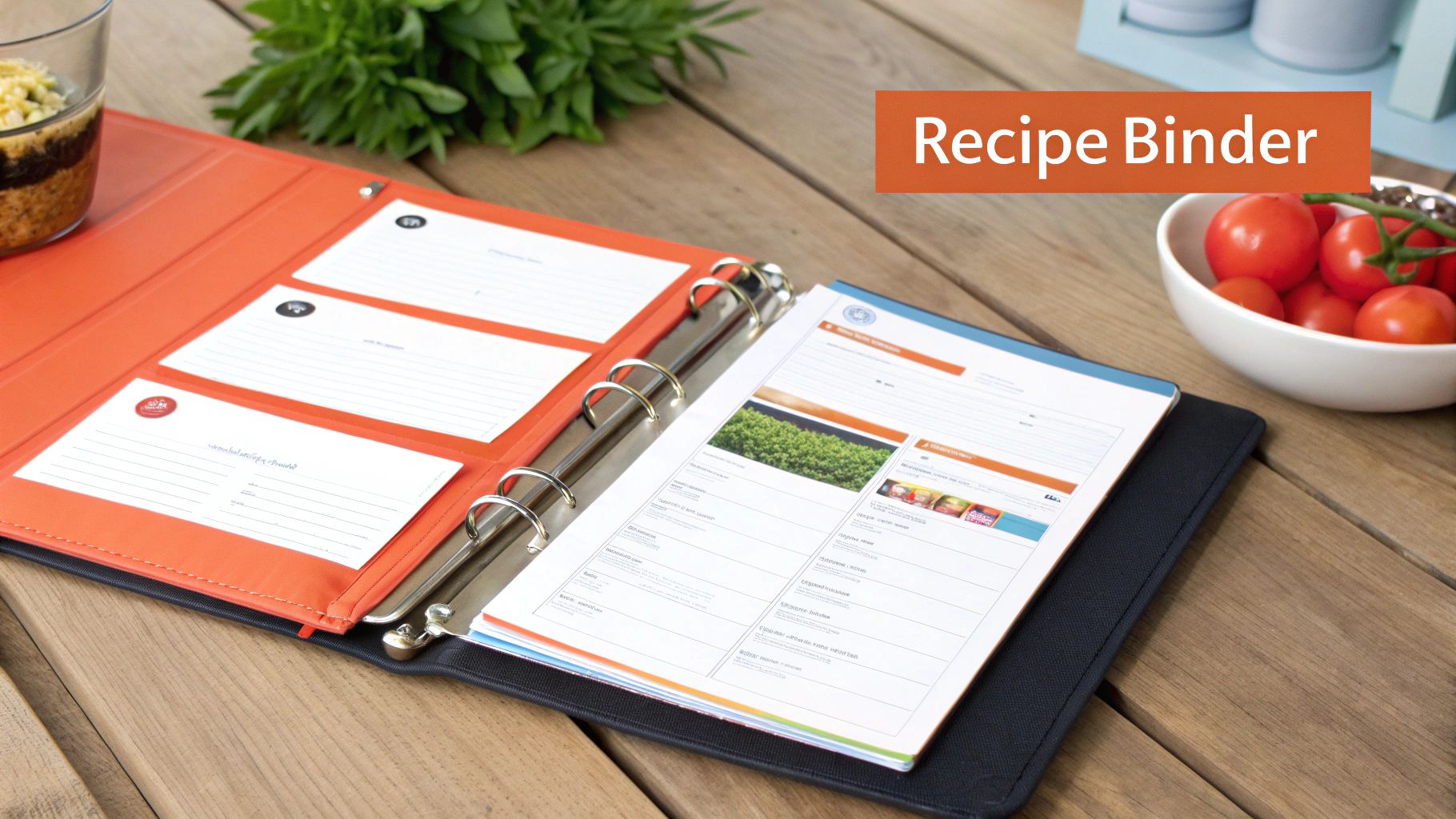
While digital tools offer convenience, many cooks still value physical recipe collections. A tangible system can be just as effective. This section explores practical physical organization methods for home cooks, from binders to recipe boxes, balancing easy access with long-term preservation.
Binders: Customizable and Adaptable
Binders offer a highly customizable system. Using sheet protectors keeps recipes safe from spills and splatters, while allowing you to easily add or remove pages. Dividers with clear labels help create custom categories to fit your cooking style.
- Recipe Protection: Sheet protectors shield recipes from damage.
- Flexibility: Easily rearrange, add, or remove recipes.
- Customization: Create categories tailored to your cooking habits.
Recipe Boxes: Classic and Compact
The classic recipe box remains a popular choice. Many cooks appreciate its compact size and the tactile experience of flipping through recipe cards. Standard boxes can be vulnerable to damage, so consider sturdier options made of metal or wood. Many boxes even include dividers for organizing by category. For further tips, check out this helpful article: How to master printed recipe organization.
- Portability: Recipe boxes are compact and easy to move.
- Tactile Experience: Enjoy the hands-on aspect of card-based organization.
- Protection Options: Select durable materials like metal or wood for lasting protection.
Preserving Family Heirlooms
Handwritten recipes often carry sentimental value. To protect these treasures, consider scanning or photographing them to create a digital backup. This reduces handling of the originals. Store the originals in archival-quality sleeves within your binder or recipe box.
Managing Clippings and Notecards
Magazine clippings and handwritten notes can be difficult to organize. One solution is pasting them onto cardstock or index cards before placing them in sheet protectors or your recipe box. This creates uniformity and makes them easier to handle. Photo albums with clear pockets offer another practical storage method.
Archival-Quality Materials: Protecting Your Culinary Heritage
Using archival-quality materials is essential for a long-lasting physical system. This means choosing acid-free paper, plastic sleeves, and adhesives. These materials prevent yellowing and deterioration, preserving your recipes for generations to come.
Recipes hold a special place in our lives. They represent family traditions, culinary explorations, and the simple joy of cooking. A well-organized physical system doesn't just store recipes; it safeguards cherished memories.
Creating Categories That Match How You Actually Cook
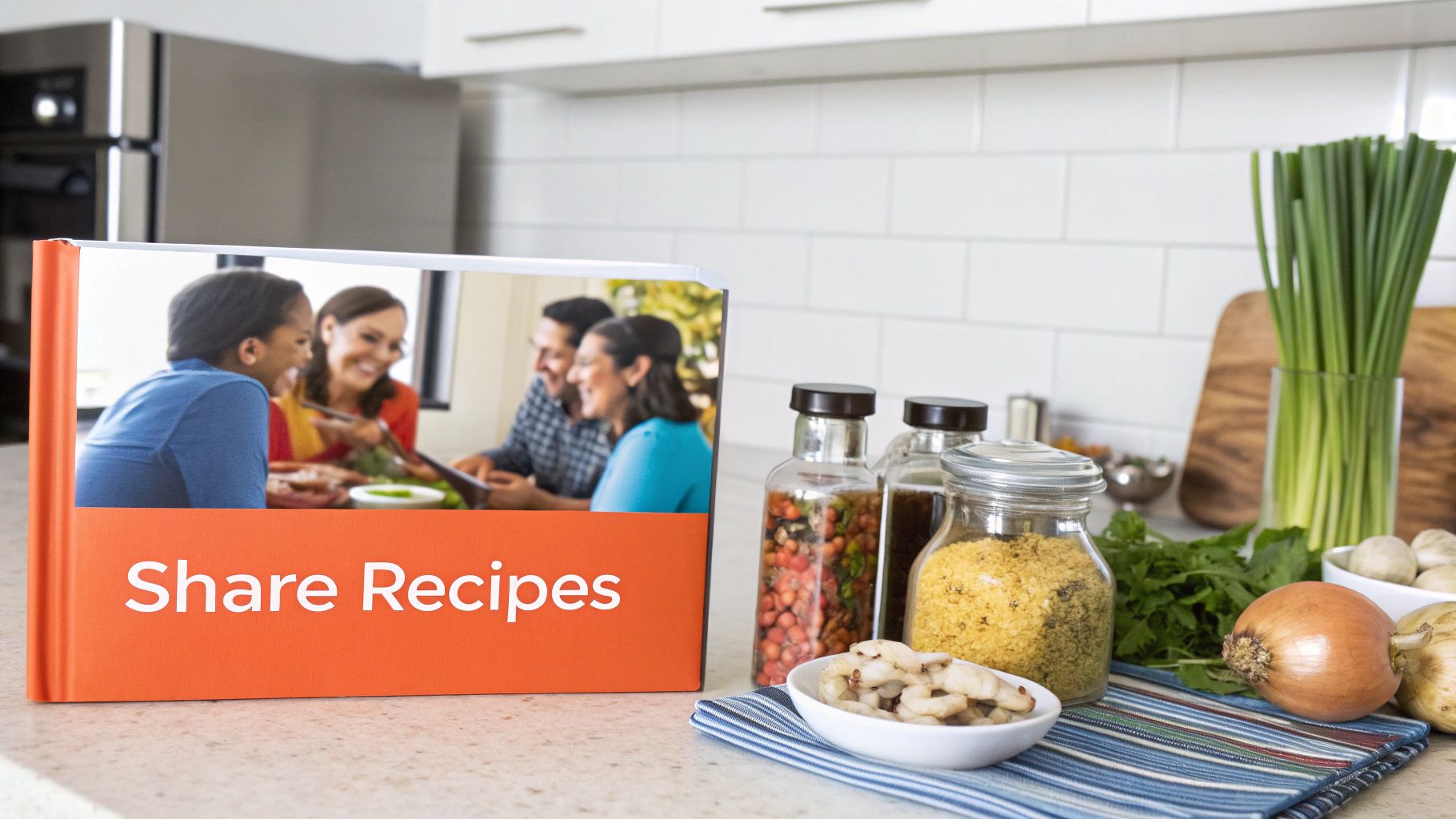
The key to organized recipes? A system reflecting your cooking habits. Forget generic categories. Create a personalized, intuitive structure. Think about how you search for recipes. Do you browse by cuisine, cooking method, main ingredient, or even occasion? Understanding your cooking patterns is the first step. For some helpful tips, check out this article on how to categorize your recipes effectively.
Analyzing Your Cooking Patterns
Start by analyzing your current recipe collection. Ask yourself: What kind of recipes do I have the most of? What do I cook most often? This reveals your cooking preferences and helps identify the best categories. For example, if you often cook Italian, a dedicated "Italian" category makes sense. If you're an Instant Pot aficionado, an "Instant Pot Recipes" category could be useful.
Building Your Personalized System
Once you understand your cooking style, build your personalized system. Here are some common categories:
- Cuisine: Italian, Mexican, Indian, etc.
- Cooking Method: Baking, Grilling, Slow Cooker, etc.
- Ingredient: Chicken, Beef, Vegetarian, etc.
- Occasion: Weeknight Meals, Holiday Dishes, Party Food, etc.
- Seasonal: Spring, Summer, Fall, Winter
- Dietary Restrictions: Gluten-Free, Vegan, Dairy-Free, etc.
This isn’t exhaustive. Combine categories as needed, like "Summer Grilling" or "Weeknight Chicken." The goal is easy recipe discovery. Remember, your system should be adaptable. Your cooking preferences and dietary needs change over time.
This interest in personalized cooking reflects larger food tech trends. Personalized meal planning and AI integration are changing how we organize and use recipes. The Recipe Organizer market is predicted to grow at a 7.80% annual rate until 2031. This growth is fueled by technology making recipe platforms more interactive and user-friendly. You can learn more about AI integration in recipe apps to explore this further.
Conducting a Recipe Audit
A recipe audit is crucial. Remove recipes you'll never make. Be honest! This prioritizes dishes you love and creates a manageable system. It makes it easier to find go-to recipes for busy weeknights or special occasions. A well-organized system reduces the mental burden of meal planning, letting you enjoy cooking.
Smart Tagging Techniques That Save You Time
Organizing your recipes can feel overwhelming. Moving beyond simple categories with a smart tagging system makes finding the perfect dish effortless. Think of tags as keywords that unlock your culinary collection, allowing you to search with precision, even years later. Successful organizers use multi-dimensional tagging to create a truly powerful system.
Building an Intelligent Tagging System
Basic tags like "dinner" or "dessert" are a good starting point. However, expanding your tags to include more detail is key to a truly effective system. Consider adding tags for:
- Preparation Time: "30 minutes," "quick," "make-ahead"
- Equipment Required: Instant Pot, "oven," "grill"
- Difficulty Level: "easy," "intermediate," "advanced"
- Key Ingredients: "chicken," "chocolate," "vegetarian"
- Dietary Information: "gluten-free," "vegan," "keto"
- Occasion: "weeknight meal," "holiday," "party"
- Cuisine: "Italian," "Mexican," "Asian"
This detailed tagging allows you to answer very specific questions. For example, "What quick vegetarian meals can I make in my Instant Pot tonight?" becomes an easy search.
Cross-Referencing for Creativity and Efficiency
Cross-referencing similar recipes is another valuable technique. Tagging variations of a dish with broader and more specific terms allows you to easily compare recipes and avoid duplicates. For instance, if you have multiple chili recipes, try tags like "chili," "beef chili," and "white chicken chili."
This method also sparks creativity. Seeing all your chili recipes together might inspire you to try a new twist on an old favorite.
Real-World Tagging Examples
Imagine you're hosting a dinner party and need a dish you can prepare in advance. Tagging recipes with "make-ahead" and "dinner party" lets you quickly filter your collection, reducing stress and simplifying planning.
Or, suppose you have leftover chicken. Searching for recipes tagged with "chicken" and "leftovers" gives you a targeted list of options, making meal planning a breeze.
Maintaining Consistency and Refining Your System
Consistency in tagging is crucial. Establish a set of keywords you'll use consistently. This avoids variations like "chicken" versus "poultry," which could lead to missed results.
Periodically review your tagging system. Refine it to match your evolving cooking style and dietary needs. This ensures your recipe collection remains a dynamic and useful resource for years to come. As more home cooks adopt digital tools, the recipe apps market is booming. It's projected to grow from $5.80 billion in 2024 to $14.27 billion by 2033, a 10.52% annual growth rate. This growth reflects the increasing demand for digital meal planning and the rise of AI-powered features. Learn more about the growing recipe apps market.
Maintaining Your System Without Losing Momentum
Creating a recipe organization system is a great first step. But the real value comes from maintaining it. Think of your recipe collection like a garden: it needs regular tending to truly flourish. This means adding new recipes, tweaking old favorites, and removing those you no longer use. This section offers practical advice for keeping your recipe collection up-to-date and useful.
Updating and Refining Your Collection
Adding new recipes should be a seamless part of your cooking life. When you discover a delicious new dish online or adapt a family recipe, add it to your system immediately. This prevents a backlog and keeps your collection dynamic. When you modify a recipe, update the changes in your system right away. Make notes of your personal adjustments for future use. This ensures you’re always working with the most current version.
Review your recipes regularly. Tastes change, dietary needs evolve, and our cooking interests shift over time. Don’t hesitate to remove recipes that no longer appeal to you. This keeps your system from becoming cluttered and overwhelming, ensuring it remains relevant to your current cooking style.
Seasonal Recipe Reviews
Our cooking often changes with the seasons, much like our wardrobes. Seasonal reviews are a great way to keep your recipe collection fresh and inspiring. As summer approaches, bring your bright salads and grilling recipes to the forefront. When the weather cools, highlight comforting soups and stews. This keeps your collection aligned with what you’re actually cooking. This approach can also help you rediscover forgotten favorites and make the most of seasonal produce.
Realistic Maintenance Schedules for Busy Cooks
Maintaining your recipe collection doesn’t have to be a huge time commitment. Short, regular maintenance is much more effective than infrequent overhauls. Even 15 minutes a week can make a noticeable difference.
To help you stay organized, here's a suggested schedule:
Recipe Organization Maintenance Schedule
A recommended timeline for key maintenance tasks to keep your recipe collection organized and current
| Maintenance Task | Frequency | Time Required | Benefits |
|---|---|---|---|
| Add new recipes | Immediately after acquiring | 5 minutes per recipe | Keeps your collection current and prevents backlog |
| Update existing recipes | Immediately after modifying | 5-10 minutes per recipe | Ensures you have the most accurate version |
| Review and remove unused recipes | Monthly | 30 minutes | Prevents clutter and keeps your collection relevant |
| Conduct seasonal reviews | Quarterly | 1 hour | Refreshes your collection and inspires seasonal cooking |
This table provides a suggested schedule. Feel free to adjust it based on your own needs and available time. The most important factor is consistency.
Integrating Recipes From Multiple Sources
Recipes come from everywhere: cookbooks, magazines, websites, friends, and family. A central system helps manage this constant influx. For instance, if you find a recipe online, add it to your digital system or write it down in your physical collection right away. This keeps valuable recipes from getting lost among bookmarks or scattered notes. This centralized approach streamlines your collection and makes finding the perfect recipe much easier.
Organizing your recipes makes cooking more enjoyable. Recify can simplify this process. With Recify, you can easily save and organize recipes from various online platforms, all in one place. No more scattered screenshots and lost links. Start organizing your recipes with Recify today!
